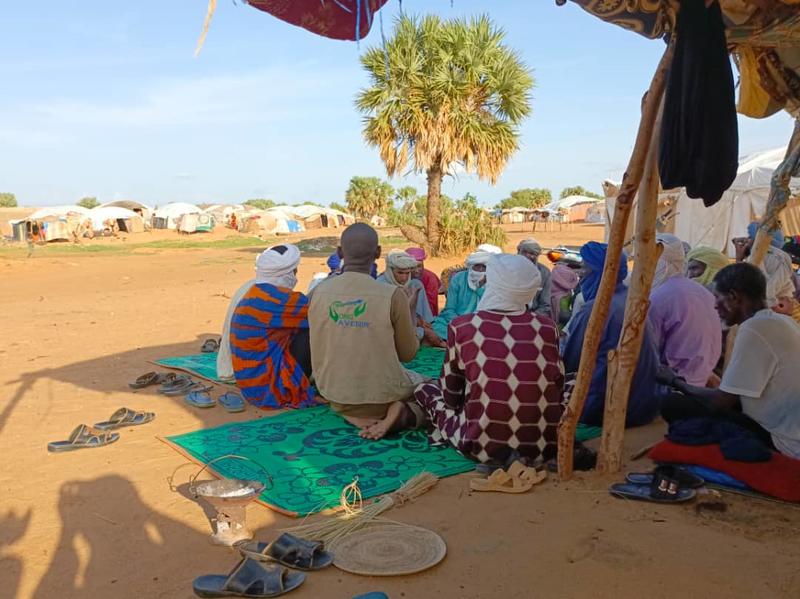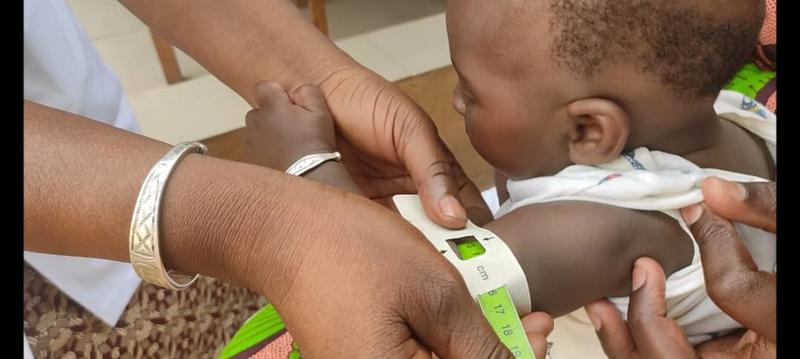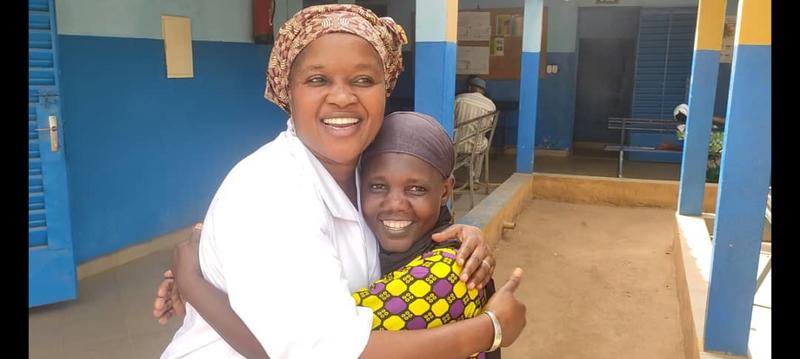Request support on coordination, information management, integration for nutrition outcomes or technical nutrition in emergencies assistance.
التماس الدعم لتنسيق التغذية وإدارة المعلومات والتغذية في حالات الطوارئ
Demander un appui pour la coordination de la nutrition, la gestion de l'information et la nutrition dans les situations d'urgence
Buscar apoyo para la coordinación de la nutrición, la gestión de la información y la nutrición en situaciones de emergencia
Solicite apoio para coordenação em nutrição, gestão de informação e nutrição em emergências
‘We have been able to reach more parents even in conflict zones, empower them to identify signs of malnutrition and engage them in the fight against malnutrition’
A quote from a field worker from Avenir, an NGO working in Mali since 2014, who is referring to the experience of using short videos and audio materials to address challenges in implementing their nutrition program.

In Mali, the 2022 Nutrition Survey (SMART) reveals a prevalence of Global Acute Malnutrition (GAM) of 10.8% at the national level and a 2.1% prevalence of severe acute malnutrition (SAM), well above the WHO emergency threshold of 2%. The Integrated Food Security Phase Classification acute malnutrition (IPC AMN) analysis carried out in September 2022 indicates a nutrition emergency for 2023 in most circles of Mali including sites of displaced people.
The Challenges
Many challenges for nutrition in emergencies programs have been addressed through innovative interventions, capacity strengthening, protocols and technical guidance. However, many small challenges, such as accurate measurement of mid-upper arm circumference (MUAC) to identify acute malnutrition in children, are widespread and have a substantial impact on nutrition outcomes. It was to address such small challenges that Avenir joined hands with the GNC Technical Alliance (the Alliance), Technical Support Team (TST), to embark on an exciting journey to develop short videos and a set of other communication materials using locally generated content.
The Alliance brought on board SEEN TV, a firm specializing in training people to tell their own stories through mobile journalism (MOJO) and packaging innovative videos tailored to appeal to the local context. Avenir and the Mali Nutrition Cluster partners identified several challenges, among which awareness on the importance of timely identification of malnutrition and how it is identified and treated were the most prominent.

Once the challenges were identified, SEEN TV, the Avenir team and the Alliance worked together to develop a series of two videos and a set of additional materials including audio spots, comic strips and GIFs. SEEN TV trained the field staff of Avenir on effective filming using their mobile phones and developed the initial scripts, which were finalized with inputs from the Avenir team, the Mali Nutrition Cluster partners and the TST. The materials focused on the following topics:
Video 1 : Identification of the signs of malnutrition, introduction to screening for malnutrition (MUAC measurement, Plumpy nut)
Video 2 : Malnutrition treatment – what to expect at the health center
Both videos were aimed at caregivers of children under five years. The videos were entirely filmed by field team members from Avenir, using their own mobile phones as the only filming equipment! The SEEN team provided real-time, online guidance when the team was filming the videos on ground. A conscious decision was taken to produce the videos in the local languages, Bambara and French, to ensure that the videos are locally relevant, and messages do not get lost in translation.
The materials were customized so that they could be shared easily through mobile phones. However, as the mobile use in Mali is relatively low (approximately 24.3 million mobile subscriptions in 2021 and 34% of the population using internet)1, it was also decided to develop the videos in a horizontal format for broadcast on the national television and audio materials for use through community radio.
The Impact
The videos produced were of high quality and are being widely appreciated in the communities for their simple yet effective messages. Dissemination of the videos has so far been done through the Nutrition Cluster partners at national and sub-national levels and cluster partners further shared the videos at the community level and at the community health centres, through their frontline teams. They were also shared widely through social media platforms of all partners. Avenir is working towards getting funding for broadcast of these videos on national television to enhance reach.
The Avenir team shared that the collaboration with the Alliance and SEEN TV was greatly appreciated as their team’s capacity was strengthened in the area of video creation. The skills included techniques for good sound and video recording using their mobile phones. In the process, the team also discovered creative ways of using their phones to make attractive video clips. Avenir ensured that the community was directly involved in the filming, including collaboration with community health services. Mr. Mamadou TOURE, Activities Coordinator, Avenir, said that they had never made videos to address programmatic challenges before this, but now with the skills that they have gained, they plan to make more short videos to promote prevention of malnutrition in the communities in which they work.
‘The process has resulted in an improvement of our skills and knowledge on the methods and techniques of using our own smartphones to produce quality videos of this kind. We really appreciate the methodology used for training us and the very simple approach adapted to the Malian context.’
In addition to Mali, the GNC Technical Alliance TST is also working with country teams in Somalia and South Sudan to produce small challenges videos using content that is locally generated and specific to their context.

